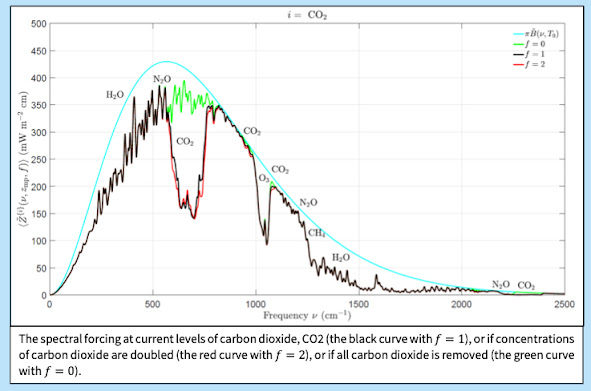Will Happer should include Raman measurements
I think Professor Happer has it absolutely wrong, sadly.
This curve was made redundant by quantum mechanics. In the 1920s, more spectral modes of molecules were discovered/ identified through Raman scattering experiments by Rasetti and others. The two CO2 modes at 1288 and 1338 cm-1 shown here are both Raman only, as are the H2O and the N2O near to them. Raman Lidars can measure the temperature of all of the gases from these modes. The last CO2 mode on the right at 2349cm-1 is right by N2's single 2338cm-1 mode. From this mode, the atmosphere's temperature is measured by Lidars, and the N2-CO2 laser radiates it by infrared photons (or electron discharge). I have written to Happer, and he sadly dismisses the/my Raman measurements.
Raman spectrometers measure in reference to the blackbody radiation ground surface temperature Max value (thin black line). Blue modes are Raman active modes, and green lines are both IR (thermo transductive) and Raman active modes.
Raman CARS Lidar spectrometers measure the temperature of the gases, corresponding to the ambient temperature at respective altitudes and locations. Along with this, via the equipartition principle, the energy of each mode of a molecule must be equal. CO2's four modes must be equal. The horizontal black line unifies the Raman with the transducer inferred temperature. All gases are the same temperature as the (Wien's) max temperature. Raman makes the blackbody curve redundant.
I put this diagram together to show the Raman Lidar reading. Raman can measure the temperature of N2, CO2, H2O, and others from surface to high altitudes. My diagram shows what Raman spectrometers measure about the blackbody radiation ground surface temperature Max value. Blue modes are Raman active modes, and green is both IR and Raman active modes.





Comments
Post a Comment